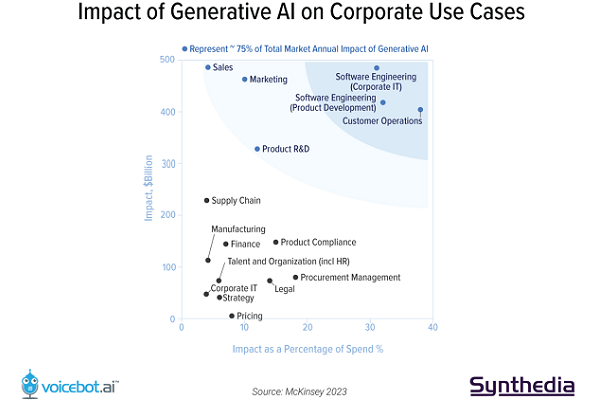See Where Generative AI Will Make the Biggest Financial Impact on Company Budgets [Chart]

Enterprises are starting to adopt generative AI at a rapid clip as they explore ways to make and save money using the technology. But, while generative AI could affect most business functions, its value is concentrated in just a few key areas, according to a study by McKinsey. The study examined 16 common functions and found that just four account for about 75% of the potential annual value from generative AI use cases, as seen in the chart above.
Customer operations, software engineering (for both product development and corporate IT), marketing, and sales stand out for their sizable share of value driven by generative AI applications versus overall function cost. For instance, corporate IT software engineering is at the top right of the chart because its impact as a percentage of spend is nearly 40%, with an impact of almost $500 billion. In other words, enterprises on average would see an enormous jump in how far their existing budget for software engineering stretches while simultaneously saving nearly half a trillion dollars.
This contrasts with previous analyses showing major AI value in functions like manufacturing and supply chain. The difference highlights generative AI’s focus on text and language tasks rather than numerical optimization. So, the technology’s business value is clustered in functional domains relying more heavily on natural language processing as they build out AI strategies and pilots.
The study signals how companies may want to prioritize their implementation of generative AI tools. Investing first in transforming these capabilities with generative models will likely yield outsized near-term returns compared to other functions. However, businesses still need balanced roadmaps accounting for generative AI’s eventual more widespread impacts. Though value concentrates today, use cases will proliferate over time, making enterprise-wide planning essential even while targeting high-potential areas first.
Follow @voicebotai Follow @erichschwartz








